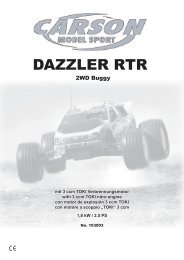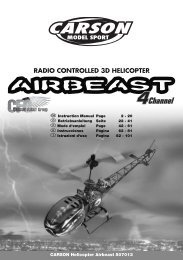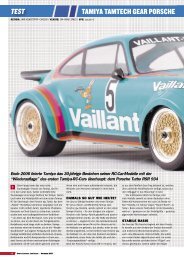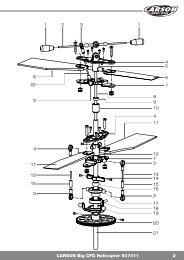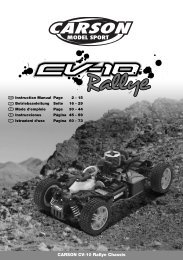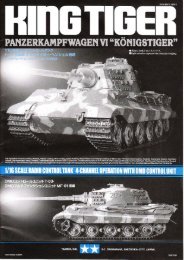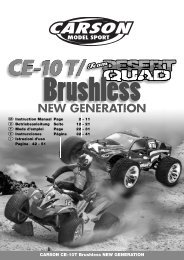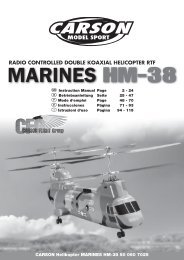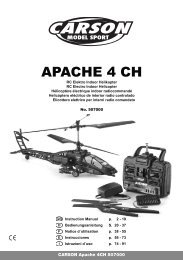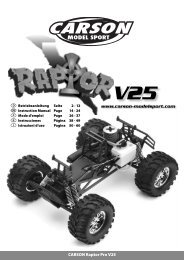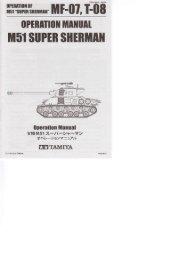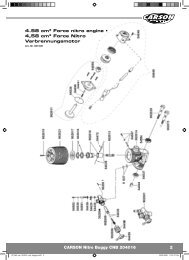RADIO CONTROLLED KOAXIAL HELICOPTER RTF - Tamiya
RADIO CONTROLLED KOAXIAL HELICOPTER RTF - Tamiya
RADIO CONTROLLED KOAXIAL HELICOPTER RTF - Tamiya
Create successful ePaper yourself
Turn your PDF publications into a flip-book with our unique Google optimized e-Paper software.
GBRotor• Damaged rotor blades must be exchanged! Refrain fromattempts at repair!• Keep away from the rotors, as soon as the battery isconnected.• Avoid presence in the plane of rotation of the rotors.Do not operate the model while seated, so that you can rapidlyget out of the hazardous area if necessary.Tighten the retaining bolts of the rotor blades only so much thatin flight these can orient themselves by 180° to each other onlywith centrifugal force.Battery chargerEmploy exclusively the enclosed batterycharger.• Operate the battery charger only on fire resistant surfacesand• Also place the battery on a non-inflammable surface whilecharging.• Ensure for sufficient ventilation of the battery charger whilecharging.• Never leave the battery charger unattended during thecharging process.• Never mix fully charged batteries and batteries which havealready run low, or batteries of a different capacity atthe same time.• When charging the batteries pay attention to the correctpolarity.Never subject the battery charger, thebatteries and the model to adverse localconditions!These are for instance:• Wetness, too high air humidity (> 75% rel., condensing).Do not touch the battery charger with wet hands.• Never operate the battery charger right after it has beenbrought from cold into warm surroundings. The resultingcondensation water can destroy the device. Permit thedevice to attain the ambient temperature whileunconnected.• Dust and inflammable gases, vapours or solvents, benzene• too high ambient temperatures (> about +40°C), direct solarradiation• Open fire, ignition sources• Mechanical stresses such as shocks, vibrations• Strong contamination• Strong electromagnetic fields (motors or transformers) orelectrostatic fields (charges)• Transmitters (radio telephones, transmitters for modelbuilding etc.). The transmitter radiation can lead to themalfunction of the charging operation or to the destructionof the battery charger and thereby also of the batteries.Permit the battery charger to cool downbetween charging operations. Disconnectthe battery charger from the power whenthe charging operation is finished.A defective battery charger may no longer be employed.If it is assumed that the device is defective, i.e. if• The device shows visible damage,• The device no longer works and• After longer storage under unfavourable conditions or• After severe transportation stress, then it should be madeinoperative without delay and secured against unintentionaloperation.Dispose of the unusable (irreparable) battery charger accordingto the prevailing statutory regulations.For safety and registration reasons (CE), the arbitraryreconstruction and/or modification of the battery charger is notpermitted.6CARSON Helikopter EC-135 Rescue 50 050 7031



